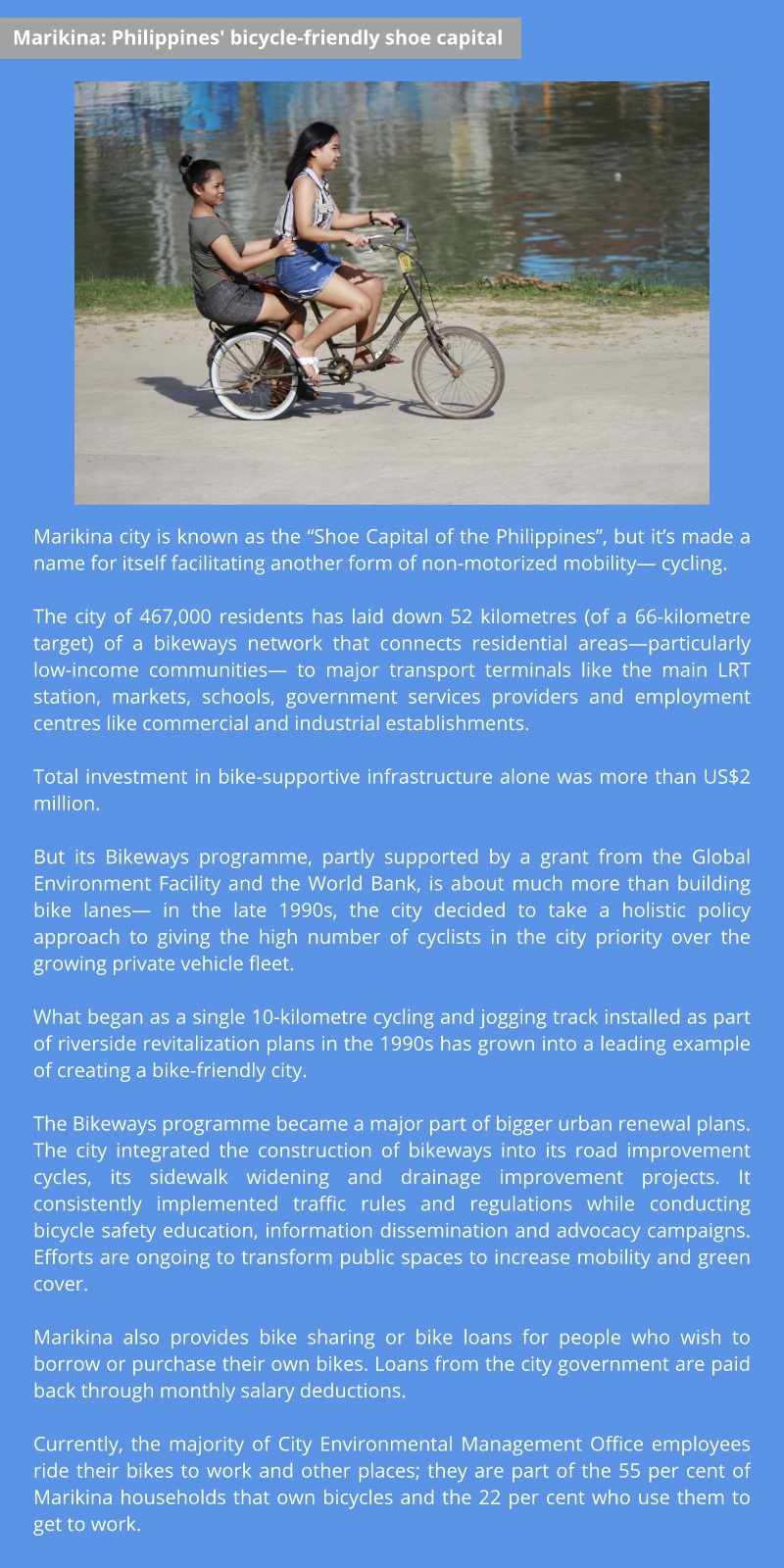Marikina City, one of the 14 cities that make up the Metro Manila area of the Philippines, is the latest member of the BreatheLife network.
In October last year, the city of 467,000 residents was the first in the Philippines to start work with Clean Air Asia under the Integrated Programme for Better Air Quality in Asia, towards the development of the city’s Clean Air Action Plan.
Work in Marikina was launched through a Letter of Agreement between the City Government of Marikina and Clean Air Asia to implement the following activities:
• performing air quality monitoring to identify potential hotspots within the city and generate data for stakeholder and public engagement;
• taking inventory of the city’s emissions and their sources, which would feed into the identification and prioritization of measures;
• conducting a health impact assessment to determine health and economic benefits of reducing PM10 and PM2.5 levels;
• engaging stakeholders from the government, universities, private sector, civil society in developing and implementing the Clean Air Action Plan. Community engagement to raise awareness about air pollution and health at the grassroots level was also conducted with the city government, with support from the UPS Foundation.
The Clean Air Plan will unite and augment the city’s ongoing efforts that contribute to air quality, which include strictly enforcing laws against open burning of garbage and smoke belching, maintaining roads and infrastructure well, and closing the food waste loop by linking it with composting and animal feed needs. The city’s sewerage treatment plan covers all households and commercial establishments within the city.
Marikina also works with the Ambitious City Promises project by ICLEI- Local Governments for Sustainability, receiving assistance from ICLEI and the Seoul Metropolitan Government to establish and implement greenhouse gas emissions reductions strategies, taking into account the cities’ development pressures and local context while emphasizing the importance of citizen engagement and working with relevant national ministries.
From victim of rapid growth to liveable, bike-friendly city
Marikina learned its lessons in pollution control and its links with sustainable urban development from reversing the environmental fallout of rapid industrial growth that began in the 1950s— for the next three decades, Marikina grew organically, in what it described as a “helter-skelter” way.
When the city decided to revitalize the Marikina River, which had suffered from irresponsible use by the factories and squatter settlements that lined its banks, it took the opportunity to install a 10-kilometre jogging and bicycle track, too—a decision that contributed to turning the river into a family-friendly recreational destination.
That decision was guided by a vision of a modern and liveable city, and the approach has since scored the city at least one sustainable lifestyle win: Marikina is a frontrunner in becoming cyclist-friendly, and has been named among the top five bike-friendly cities in the Philippines (see box for Marikina’s journey to making its city bicycle-friendly).
Marikina continues to work on its vision, with several developments in the works: a Green Building Code with provisions on energy efficiency has been drafted, a comprehensive land use plan is being developed by the government together with stakeholders, and there are thrusts to support renewable energy use by commercial establishments and institutions.
